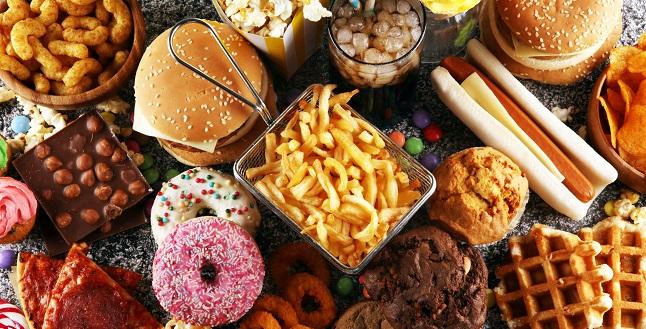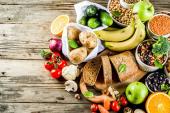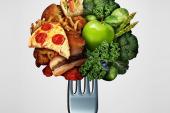Eating More Ultraprocessed ‘Junk’ Food Linked to Higher CVD Risk
These foods very rarely resemble whole foods, and they comprise far too much of the typical American diet.

Each additional serving of ultraprocessed foods was associated with a 7% higher risk of hard CVD events, a composite endpoint that included sudden/nonsudden coronary death, MI, and fatal/nonfatal stroke, and a 9% increase in the risk of hard coronary heart disease events, a similar composite that excluded stroke. While there was no association between ultraprocessed food and total mortality, each additional serving was associated with a 9% increased risk of CVD mortality.
“Ultraprocessed foods contain very little or no whole foods,” lead investigator Filippa Juul, PhD (New York University, New York, NY), told TCTMD. “They’re primarily based on starches, fats, oils, sugars, sweeteners, additives, and so on. They’re really composed of ingredients that have gone through multiple physical and chemical processes of extraction, and then they’re assembled into a product that again goes through multiple other types of processing.”
In contrast with even processed food (whole foods preserved by traditional techniques such as canning or pickling), where consumers can at least recognize the whole food at the heart of the product, such as vegetables, that’s generally not the case with ultraprocessed products, said Juul. And while everybody knows junk food and candy when they see it, many foods marketed and perceived as healthy, such as sweetened yogurt with artificial flavors, breakfast cereals, and protein bars, also fit the ultraprocessed bill.
Thus far, there have been limited studies examining the relationship between ultraprocessed foods and cardiovascular health, but one French study showed that each 10% increase in ultraprocessed food consumption increased the risk of incident CVD.
To TCTMD, senior investigator Niyati Parekh, PhD (New York University), pointed out there are several observational studies linking ultraprocessed foods to obesity, metabolic syndrome, hypertension, and type 2 diabetes, all of which are CVD risk factors. Historically, however, nutrition research has primarily focused on specific nutrients or foods, such as sugar-sweetened beverages or processed meats, in relation to CVD, rather than to the extent that foods are processed.
Hard Outcome Risk Higher With More Servings
Using data from the Framingham Offspring Study, the researchers identified 3,003 adults free from CVD with dietary data available at baseline. Information on diet, anthropometric measurements, lifestyle factors, and socioeconomic factors were collected every 4 years between 1991 and 2008. The participants were middle-aged (mean age 54 years) and overweight (mean body mass index [BMI] 27.3 kg/m2). More than half were women. Nearly 6% had diabetes, and one in five had hypertension. The patients were followed for a mean of 18 years.
The mean intake of ultraprocessed foods was 4.0 servings per day in the lowest quintile and 11.9 servings per day in the top quintile. The incidence of hard CVD events was 3.36 and 6.64 events per 1,000 person-years of follow-up among those in the lowest and highest quintile of ultraprocessed food servings per day. Similarly, the incidence of hard CHD events was 2.00 versus 4.36 events per 1,000 person-years in the bottom and top quintile of ultraprocessed food consumption. Adjusted for age, sex, education, smoking status, alcohol intake and physical activity, there were significant associations seen for those events as well as for overall CVD and CVD mortality.
Association Between Ultraprocessed Food Intake and Outcomes
|
|
Adjusted HR (95% CI)* |
|
Hard CVD (sudden/nonsudden coronary death, MI, fatal/nonfatal stroke) |
1.07 (1.03-1.12) |
|
Hard CHD (sudden/nonsudden coronary death and MI) |
1.09 (1.04-1.15) |
|
Overall CVD (coronary heart disease, all stroke, transient ischemic attack, cerebral embolism, other cerebral cardiovascular disease, PAD, and congestive heart failure) |
1.05 (1.02-1.08) |
|
CVD Mortality |
1.09 (1.02-1.16) |
*Per single-serving increase
Overall, the link between ultraprocessed food intake and incident CVD remained statistically significant even after adjusting for total energy intake, diet quality, waist circumference, BMI, systolic blood pressure, and current hypertension/hyperlipidemia treatment.
In the US, Americans get about 58% of the daily caloric intake from ultraprocessed foods. In the Framingham Offspring Study, participants consumed an average of 7.5 servings per day. A direct comparison between the study participants and the US population isn’t possible given the data that are available from Framingham Offspring Study, but Juul suspects the study participants got fewer daily calories from ultraprocessed foods given they’re older and highly educated, a group that tends to eat less ultraprocessed foods.
Mechanisms Unknown, but Lots of Possibilities
The exact mechanisms underlying why ultraprocessed foods increase the risk of CVD are fully not known, though there are a number of potential mechanisms, said Juul and Parekh.
“My best bet would be there is a compounding effect of multiple factors,” said Juul. “I don’t think ultraprocessed foods increase the risk of CVD only by contributing to higher energy intake and weight gain. There are a number of different pathways that can include higher inflammation, oxidative stress, impaired glycemic response, endothelial dysfunction, alterations to the gut microbiota and so on.”
In terms of composition, ultraprocessed foods tend to be high in refined carbohydrates, added sugars, fat, and calories, and also have a “degraded food matrix,” which can alter where along the digestive tract and how fast nutrients are absorbed. While the individual additives, such as artificial sweeteners, have been approved for safety, there may be a compounding effect resulting from chronic exposure to multiple different additives over a lifetime. While there are thousands of approved additives, she said there isn’t a comprehensive understanding of how they interact in the body.
To TCTMD, Juul suggested that policy makers or guideline writers looking to influence population health should focus on an entire group of foods and dietary patterns, rather than point out a few bad actors. “It’s easy otherwise to say that we should limit one or two specific foods, while the overall diet still remains unhealthy,” said Juul.
The present study provides support for the recent primary-prevention guidelines from the American College of Cardiology/American Heart Association that recommend minimizing the intake of processed meats and refined carbohydrates. In terms of the bigger picture, though, much more work is needed.
In an editorial, Robert Ostfeld, MD (Montefiore Health System, New York, NY), and Kathleen Allen, MS, RD (Geisel School of Medicine at Dartmouth, Hanover, NH), state that given the existing data on the harms of ultraprocessed food and the benefits of eating minimally processed food, “it’s unlikely that benefits from consuming ultraprocessed foods will be identified unless calorically necessary.” Randomized trials comparing ultraprocessed and minimally processed foods would be unethical, but more observational and mechanistic studies can help refine the understanding of the health impact of specific ultraprocessed foods, they write.
“Furthermore, given the prevalence of ultraprocessed food consumption and given that ultraprocessed foods tend to displace more healthful foods in the diet, timely action to curb the consumption of ultraprocessed foods is needed,” according to Ostfeld and Allen. With policy reform, education, marketing and labelling changes, and improved access to affordable less processed food, “the goal should be to make the unhealthy choice the hard choice and the healthy choice the easy choice.”
Michael O’Riordan is the Managing Editor for TCTMD. He completed his undergraduate degrees at Queen’s University in Kingston, ON, and…
Read Full BioSources
Juul F, Vaidean G, Lin Y, et al. Ultra-processed foods and incident cardiovascular disease in the Framingham Offspring Study. J Am Coll Cardiol. 2021;77:1520-1531.
Ostfeld RJ, Allen KE. Ultra-processed foods and cardiovascular disease: where do we go from here? J Am Coll Cardiol. 2021;77:1532-1534.
Disclosures
- Parekh and Juul report no conflicts of interest.





Comments